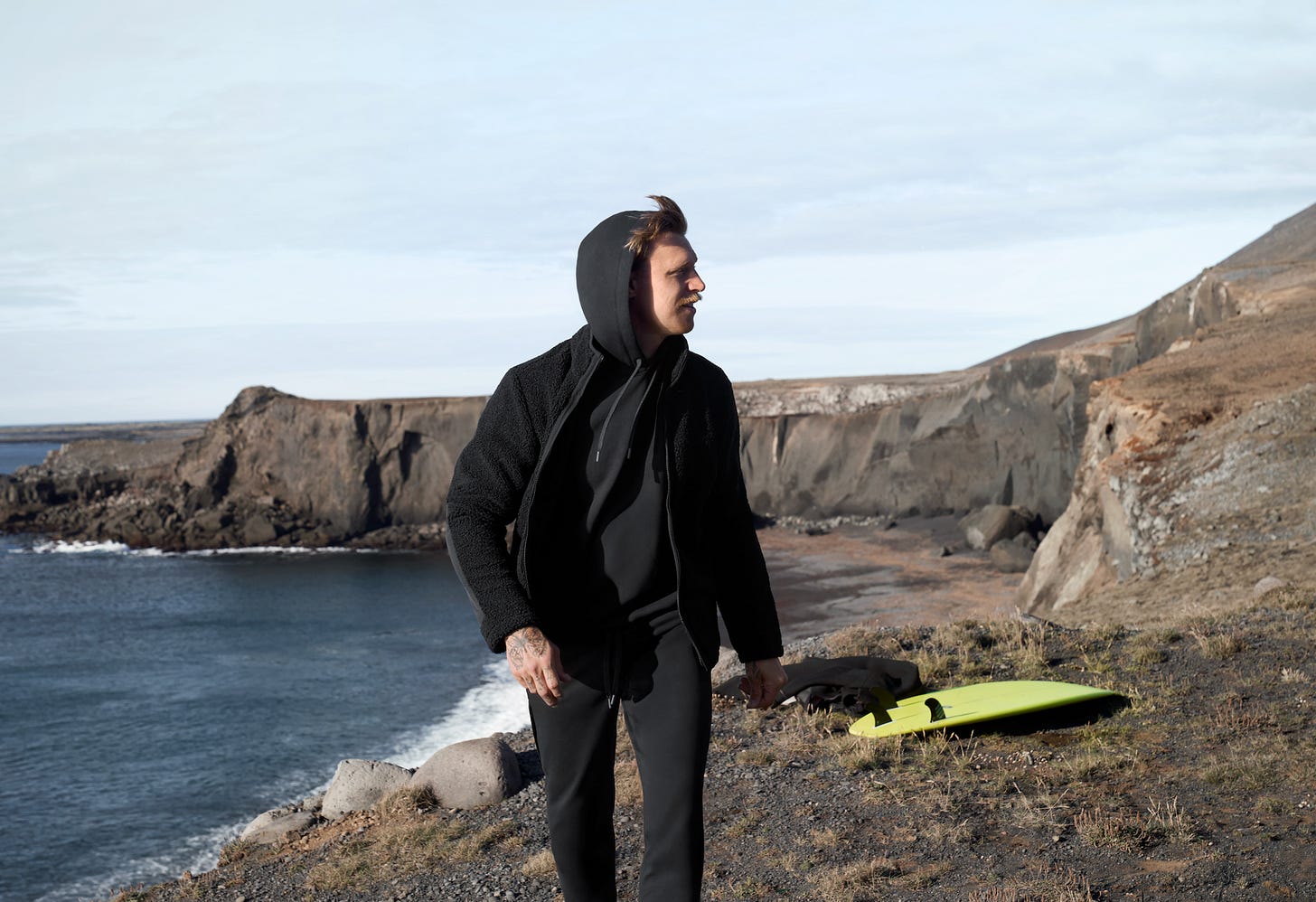When we set out to find a partner for our WARMKNIT campaign, we never thought we’d end up on the coast of Iceland with the country’s first professional surfer, Heiðar Logi. Then again, we had scant idea that anyone surfed in Iceland at all…
Logi first got on his board as a teenager, in waters cold enough to give the average person hypothermia. Since turning pro, he’s surfed everywhere from California to Indonesia; he’s also been the subject of a Netflix documentary, wherein he manages to catch some waves under the Northern Lights. (Which, crazy sentence.)
“There is more surf to be had in those [other] places—it’s easier to find good swells and the winds aren’t as wild,” he told Rolling Stone in 2017. “But there is a fickleness about Iceland that makes you appreciate every wave.”
We spent the day with Logi, starting at his home outside Reykjavík before heading out to one his favorite surf spots. Along the way, we chatted about his most memorable surf, how he stays warm, and his new favorite hobby.
Knowing the water is as cold as it is, what drew you to get in there in the first place?When I was a kid, I used to see photos of people surfing and I was just drawn to it. And I had a friend who would let me try for the first time. I made a deal with my mom that if i would pass all my school tests, she would buy me some gear and I would start surfing.
How did you learn to tolerate the cold?
The cold is just something that you learn to navigate. You just know it’s going to be cold and [eventually] it doesn’t surprise you anymore.
Can you describe the difference between surfing in Iceland and surfing elsewhere?
The difference between surfing here and warmer climates, first of all, it’s the crowd—here we don’t have that many surfers, so there aren’t that many people battling for each wave.
But it’s harder to surf here. The weather is more inconsistent and unreliable. I’ve had friends come over and some absolutely love it. Some don’t. It just depends on where your interest in adventure lies.
What’s your most memorable surfing experience?
The one time me and [my friend] Elli were surfing together on the summer solstice—you know, in Iceland we have 24 hours of daylight. To have waves that time of year is pretty rare, and to have conditions perfectly lining up at this place where we surfed was very special.
What’s been your most challenging surfing experience?
One time we went up to the West Fjords [region of Iceland]. We had been traveling for a few days shooting a video. I just didn’t have a lot of energy, and we had to hike this path to get to the wave, and once we hiked there we went surfing. On the way back, I was absolutely finished.
When you go surfing and you catch the perfect wave…can you describe what that feels like?
It’s the best feeling ever. When you’ve been chasing waves for weeks, and when you finally get that perfect day, you release so much dopamine and happy hormones that I’ve often had, like, a hormone hangover the day after.
Can you make a case for why Iceland is the best place to surf in the world?
It’s not [laughs]. It’s absolutely not. But we have good days once in a while. As a surfing destination, it’s hard work but it’s fun to pursue.
How important is it to stay warm before and after a session?
I feel like the most important part of staying warm before a session is to eat energetic food before you go, like fatty foods. But also, to keep moving. Even on the coldest days of winter, if there’s a lot of wind and you’re moving around quite a bit, you don’t necessarily feel it. But as soon as you stop moving, the cold creeps in.
After a after cold surf, it’s important to have a good first layer. So I usually wear a lot of wool—a wool sweater and an insulating windbreaker does the trick.
One last question: How did you get into fly fishing? What do you like about it? In some ways, it feels like the opposite of cold-water surfing…
Ever since I was a kid, I’ve had a hard time relaxing and slowing things down. A couple of years ago, when one of my childhood friends introduced me to fly fishing, I could immediately feel extending [the line] in the water by the river and just focusing on each cast, and the next cast and the next. It just creates this kind of focus out of nature, and time flies by without me even noticing.




